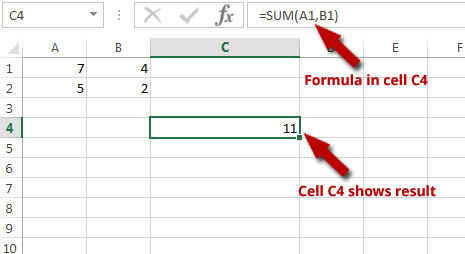

Press F4 to switch between the reference types.

In the formula bar, select the reference that you want to change. Select the cell that contains the formula. Less often, you may want to mixed absolute and relative cell references by preceding either the column or the row value with a dollar sign-which fixes either the column or the row (for example, $B4 or C$4). Then, when you copy the formula =$B$4*$C$4 from D4 to D5, the formula stays exactly the same. If you want to maintain the original cell reference in this example when you copy it, you make the cell reference absolute by preceding the columns (B and C) and row (2) with a dollar sign ( $). When you copy a formula that contains a relative cell reference, that reference in the formula will change.Īs an example, if you copy the formula =B4*C4 from cell D4 to D5, the formula in D5 adjusts to the right by one column and becomes =B5*C5. If, for example, you refer to cell A2 from cell C2, you are actually referring to a cell that is two columns to the left (C minus A)-in the same row (2). Lessīy default, a cell reference is a relative reference, which means that the reference is relative to the location of the cell. Last week, I did a Pivot Table presentation, and someone asked why you get an absolute reference, if you try to link to a pivot table cell. To change the type of cell reference: Select the cell that contains the formula. By pressing the F4 key cell references are changed directly to the left of the insertion point.Excel for Microsoft 365 Excel for the web Excel 2021 Excel 2019 Excel 2016 Excel 2013 Excel Web App Excel 2010 Excel 2007 More. Less often, you may want to mixed absolute and relative cell references by preceding either the column or the row value with a dollar signwhich fixes either the column or the row (for example, B4 or C4). For instance, if the cell reference is typed as $A1, continuous pressing of F4 will change the cell reference to A$1 and then A1. If the F4 key is pressed continuously, the spreadsheet program will cycle through all of the absolute reference possibilities. The spreadsheet will automatically make the cell reference absolute.

In many spreadsheet programs such as Excel, a cell reference can be made absolute by pressing the F4 key after the cell reference is typed. If you’re running MAC, use the shortcut: + T to toggle absolute and relative references. The F4 shortcut to lock a reference only works on Windows. If you can’t get it to work, here’s why: 1: You are using a MAC. In absolute mode, a Macro will start working in the same cell it was in when it was recorded. Written in Excel terms, it toggles absolute and relative references. Excel records Macros in absolute mode by default. So, if B10 is a cell in a spreadsheet, $B$10 is used to denote that the reference always points to the 10th row in column B, even if that reference is copied to another cell or the spreadsheet is changed in some other way. By Excel Tips and Tricks from Categories: Excel®, Macros Tags: Excel Macro Relative Reference.

In some scenarios, it becomes important to keep a cell reference constant when it is copied to a different cell.Īn absolute cell reference always remains the same no matter where it is copied and is often denoted by the "$" symbol. Cell references are often used in formulas, charts, functions and other commands. Techopedia Explains Absolute Cell ReferenceĪbsolute cell reference can be used when a particular cell reference needs to be constant.


 0 kommentar(er)
0 kommentar(er)
